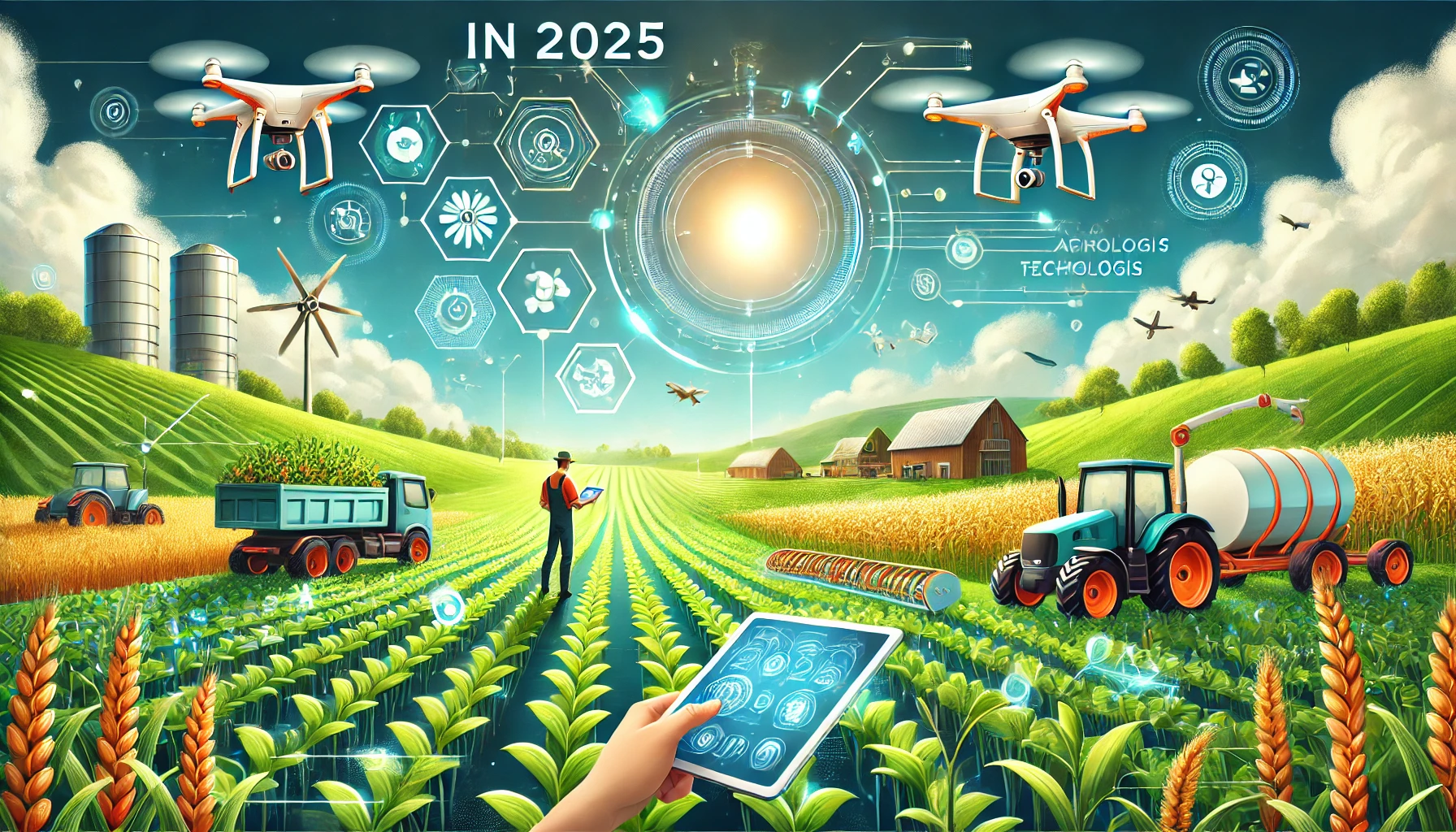In 2025, farming has undergone a significant transformation, driven by cutting-edge technologies that empower farmers to boost productivity, optimize resource use, and minimize environmental impact. These innovations are shaping a new era in agriculture, making it more sustainable, efficient, and profitable than ever before.
Smart Farming with IoT and Precision Agriculture
Internet of Things (IoT) in Farming
Farmers now utilize IoT devices to monitor and manage their farms in real-time. Sensors embedded in the soil provide accurate data on moisture levels, nutrient content, and temperature, enabling precise irrigation and fertilization. These devices also track livestock health, location, and behavior, ensuring better animal care and reduced losses.
Precision Agriculture Tools
Precision agriculture, powered by GPS and advanced analytics, allows farmers to map their fields in detail. Drones equipped with multispectral cameras survey crops to identify pest infestations, water stress, or disease early. Automated tractors and sprayers ensure resources like water, seeds, and fertilizers are distributed with pinpoint accuracy, reducing waste and costs.
Artificial Intelligence and Machine Learning in Decision-Making
AI and machine learning (ML) systems are game-changers in agriculture. Farmers can now rely on AI-driven platforms to analyze weather forecasts, market trends, and crop performance data. These tools offer actionable insights, such as optimal planting times, pest control strategies, and yield predictions, helping farmers make informed decisions.
Predictive Analytics
AI models predict climate patterns and potential threats, such as droughts or pest outbreaks, weeks in advance. This foresight enables farmers to implement proactive measures to protect their crops and livestock.
Automation in Farming Operations
From robotic harvesters to autonomous drones, automation reduces the need for manual labor while increasing efficiency. These machines work tirelessly, ensuring timely harvesting and reduced spoilage.
Vertical Farming and Controlled Environment Agriculture
As arable land becomes scarce, farmers are embracing vertical farming and controlled environment agriculture (CEA). These methods maximize space and ensure year-round crop production.
Hydroponics and Aeroponics
Hydroponic and aeroponic systems allow crops to grow without soil, using nutrient-rich water or mist. These systems significantly reduce water usage and eliminate the need for pesticides, producing healthier and faster-growing plants.
LED Lighting for Growth Optimization
LED lights tailored to specific wavelengths optimize photosynthesis, ensuring maximum yield in indoor farms. This technology allows farmers to grow crops in urban areas or regions with unfavorable climates.
Blockchain for Transparent Supply Chains
Blockchain technology is revolutionizing the agricultural supply chain. By providing an immutable ledger, blockchain ensures transparency and traceability from farm to table.
Improved Food Safety
Consumers can trace the journey of their food, verifying its source and quality. This transparency builds trust and allows farmers to command premium prices for sustainably grown produce.
Streamlined Transactions
Smart contracts on blockchain platforms simplify transactions between farmers, suppliers, and buyers, reducing delays and ensuring fair payments.
Sustainability with Renewable Energy and Biotechnologies
In 2025, sustainability is at the forefront of agriculture. Farmers are adopting renewable energy sources and innovative biotechnologies to reduce their environmental footprint.
Solar-Powered Farms
Solar panels power irrigation systems, storage facilities, and machinery, lowering energy costs and dependence on fossil fuels.
Genetically Edited Crops
CRISPR technology is used to create crops resistant to pests, diseases, and extreme weather. These advancements reduce the need for chemical inputs and improve food security.
Improved Access to Financing and Markets
Digital platforms and fintech solutions are bridging the gap between farmers and financial institutions. Mobile apps provide access to loans, insurance, and market information, enabling farmers to make better financial decisions.
E-Commerce Platforms
Farmers can sell their produce directly to consumers or retailers through online marketplaces, eliminating middlemen and increasing profits.
Conclusion
The year 2025 marks a turning point in agriculture, as advanced technologies redefine how farmers cultivate the land and raise livestock. By leveraging IoT, AI, blockchain, and sustainable practices, farmers can achieve greater efficiency, higher yields, and a smaller environmental footprint. These innovations not only benefit farmers but also ensure food security for a growing global population.
